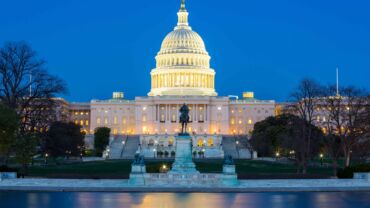The good news is that there is 2 trillion dollars out there with a $349 billion ear marked for low interest rate emergency small business loans. Let’s get our share! After all we will all be paying back this stimulus package for the remainder of our natural lives.
The Program
The Paycheck Protection Program extends the Small Business Administration 7(a) loan program. To be eligible you must certify you intend to use the money to retain workers, maintain payroll, make mortgage/lease payments, utility payments and that current economic conditions make the loan necessary to maintain your business. (Yes, I know that was a run-on sentence, but its our legal system, so what can you do?)
No collateral or personal guaranty is required. The maximum interest rate is 4% with a repayment period of up to 10 years [Ed. Note: Treasury has since released guidance providing for a 2-year repayment period]. The normal “no credit elsewhere” test is waived; therefore, you are still eligible even if you have open lines of credit. Lenders can defer fees, principal and interest for no less than 6 months and no more than 1 year.
What is Payroll? Payroll costs are defined broadly and includes salary, wage, commission, tips, payment of vacation, parental, family, medical or sick leave, allowance for dismissal or separation, payment of required health care benefits including insurance and other retirement benefits. Payments for compensation are capped at annual compensation of $100,000 per employee/subcontractor. While payments to subcontractors are not included in the definition of payroll, they are to be used as consideration in making the loan decision. Payroll does not include any payments that are recouped by the credit for sick and family leave payments under the Families First Coronavirus Response Act.
Do payments to myself count as payroll? Yes, even us self-employed individuals get to drink from this well.
Loan Maximum: The maximum loan amount is 2.5 times the average monthly payroll from “the 1-year period before the date the loan is made”. Accordingly, if the prior year’s payroll was $200,000, the maximum loan would be $41,667 (Total payroll $200,000 divided by 12 months = 16,667 x 2.5). For much larger businesses the no loan can exceed $10,000,000.
In addition to payroll, the loan proceeds can be used for the continuation of group health care benefits, payments on any mortgage obligation, rent, utilities and interest on any other debt obligations incurred before the covered period.
Forgiveness Provision: Loan forgiveness is based on the eligible costs paid during the 8-week period beginning with the loan origination. Eligible costs include payroll, interest on mortgages, rent, utilities however forgiveness is reduced if there is a reduction in the number of employees or a reduction in wages paid that is greater than 25%.
Where to Apply: The loans are available though any bank that is an SBA lender.
My Take: All eligible small businesses should apply for these loans and apply as soon as possible. I expect anyone who is eligible will do so also. Unfortunately, as of today, bankers are still trying to figure out the lending guidelines. Potentially, the loan could cover your own salary and be forgiven. The worst case you receive a low interest loan that you can repay over 2 years. While this money must be used for its intended purpose, you can use your other funds to pay-down high interest rate debt.
Till we meet again, I wish you all the best and please stay safe!
Editor’s Note: This post has been updated to reflect Treasury Department guidance providing for a 2-year repayment period rather than the maximum 10-year repayment period authorized under the law.






